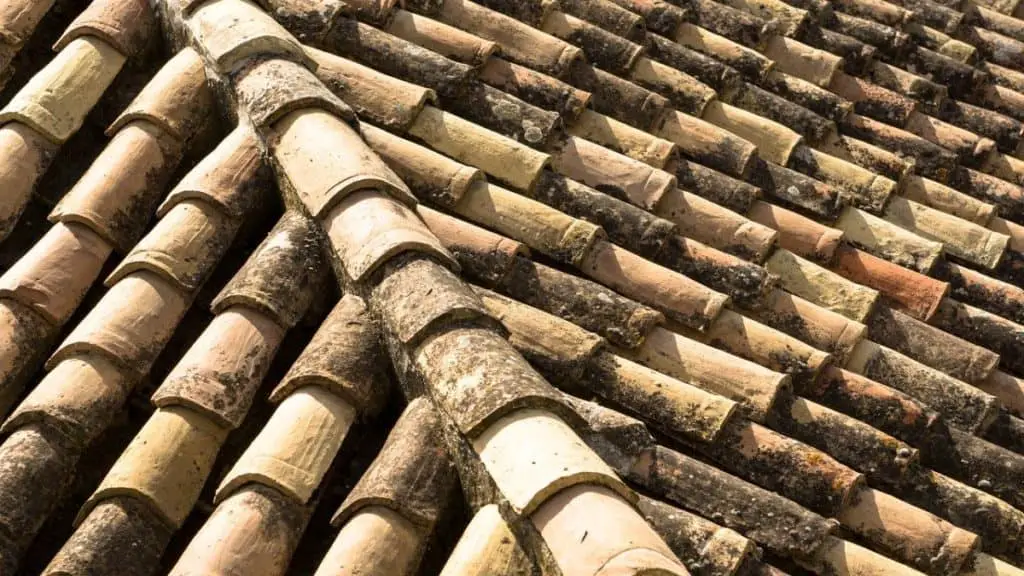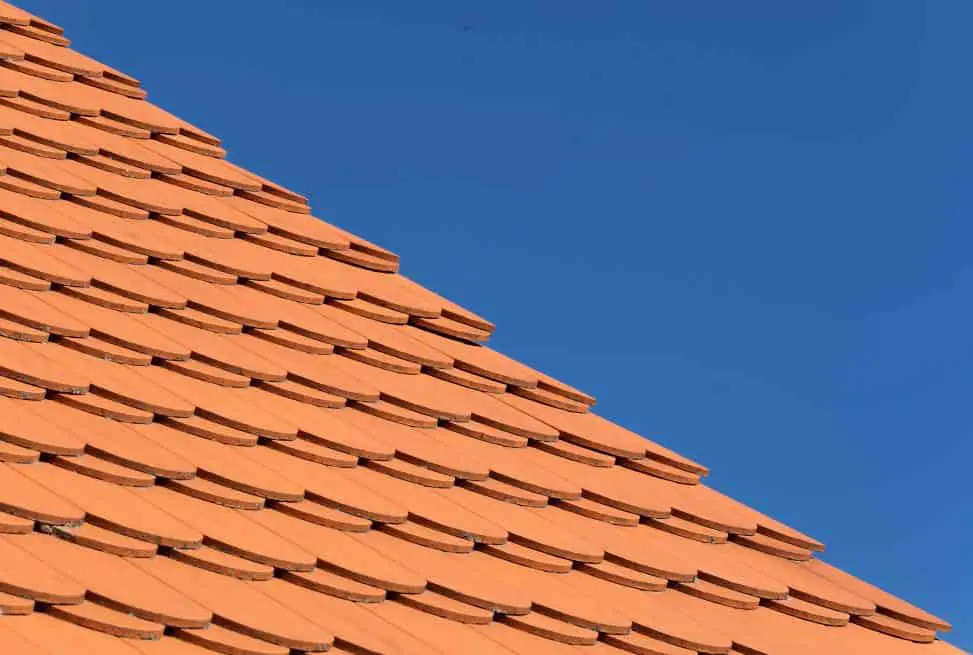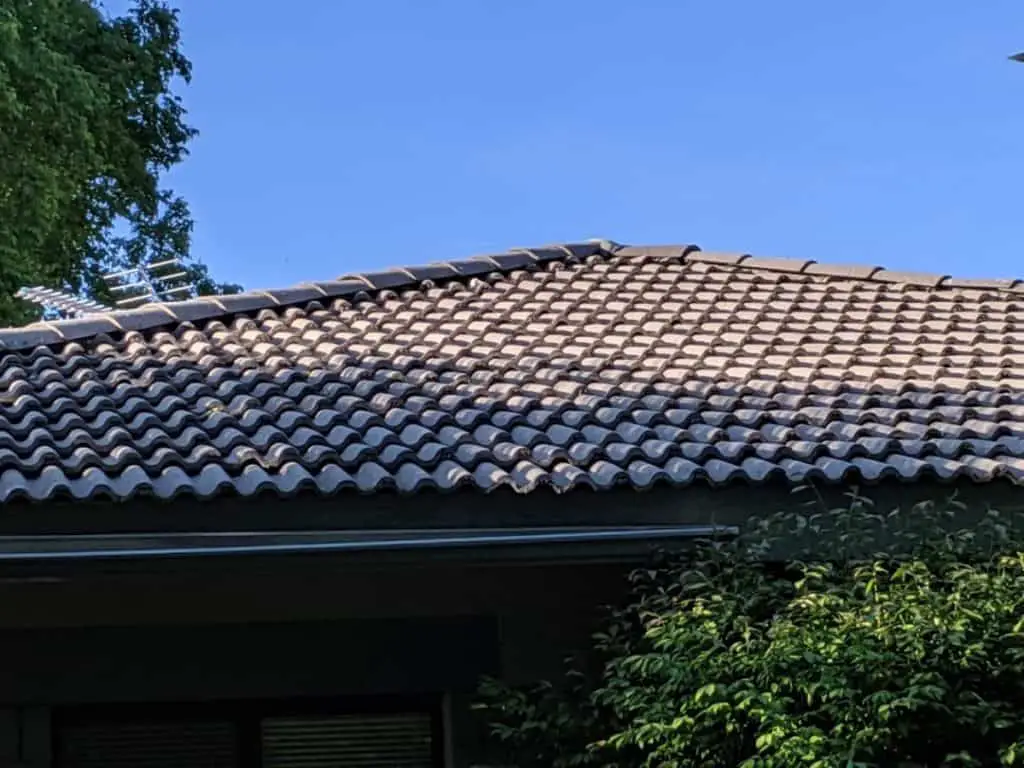
Whether you own a public building or a residential home, clay roof tiles offer many benefits and add a beautiful finishing touch to any property, making them a popular choice. However, due to the nature of the material, these tiles are also very fragile, and therefore it often raises the question, “can you walk on clay tile roofs?”
A roof inspection is crucial for any roof as it can help detect roofing problems ahead of time, and therefore it indirectly helps to prolong the lifespan of a roof. For a proper roof inspection (or repair), though, one will have to climb on top of the roof to inspect its condition. While most professionals are equipped and skilled in walking on clay tiles, homeowners might not be, which is why this question is more than relevant.
If you rather not do it yourself, I recommend finding a professional roofing contractor through our trusted partner Home Advisor because they allow you to get up to 4 quotes for free. This allows you to compare and choose the best roofing professional for your needs. Check them out by using this affiliate link.
Can You Walk On Clay Tile Roofs?

Even though clay tiles are more durable than shingles, they can break or crack easily if too much pressure is applied while walking on them. However, if you know how to walk on a clay tile roof properly, you can do so without damaging them. It is best not to walk on your clay tile roof overall, but one has no other choice when it comes to roof repairs and inspection. Therefore, knowing how to do so before taking on such a task is crucial!
If you are considering a clay tile roof for your property, one of your concerns may be its durability. Since they can break or crack so easily under foot traffic, they must be too fragile to consider as a roofing option, right? Wrong! If one explores the history of clay tiles, one will realize how durable they are. Let’s explore!
One of the oldest materials used in roofing is clay. This is evident when we look at examples found across the world. For instance, in China, archaeologists found signs of clay roofs that date back as far as 10,000 BC. The use of clay in roofing spread from there across Asia, the Middle East, and Europe. One of the most popular clay roofing styles today is the Roman style because of its iconic profile and practicality.

Clay tile roofing offers many benefits, of which durability and resistance to wear stand out the most. In some cases, the only remains of ancient buildings found in archaeological sites are clay tiles which are excellent proof of how long-lasting they are. Therefore it is easy to understand why many property owners might choose clay tiles for their roofs.
A clay tile roofing system is for sure more expensive than, let’s say, asphalt shingles. However, they are worth it in the long run. Since clay tiles offer longevity, they are highly cost-effective across their long lifespan, despite their price.
Many roofers and architects consider clay tiles to be the most premium option for roofs as it offers many benefits beyond their longevity.
Clay roofing tiles can suit many property styles because they come in a wide range of different types and styles. Before clay tiles are baked, they can be molded into several styles and shapes. Therefore the possibilities are endless!

When it comes to adverse weather conditions and extreme temperatures, clay roofing tiles are highly resistant. Clay tiles are also effective insulators, which means that they are great at keeping the living space cool and comfortable.
To sum up all the benefits, clay roof tiles are an environmentally friendly roofing option that can last for decades. They are energy efficient, low maintenance, and will never decay. However, just like any other roofing material, they come with some disadvantages as well.

One of these disadvantages is that they are brittle and can break under pressure. Therefore they are not suitable for foot traffic, and you should never walk on a clay tile roof unless you are confident about what you are doing.
While very durable, they are prone to break under heavy impacts, such as falling branches. Clay tiles are also not suitable for areas with heavy winds as they can move around and fall off the roof.
Depending on the style and brand, in most cases, clay roofing tiles can only be installed on a roof that has a relatively steep pitch, at least 25 degrees. They are also not suitable for all structures as they are heavy, and the installation process is complicated.
Nevertheless, if your property is suitable for clay tiles, this kind of roof can provide your home or building with iconic aesthetics that will last a lifetime and more!
Keep in mind that a clay roof tile installation is best left to the professionals, and even repairs should never be done without consulting a professional roofer first due to the material’s nature.
When Should You, And When Should You Not Walk On Clay Tile Roofs?
In general, it is never okay to walk on a clay tile roof unless you are a professional roofer. If, however, you insist on doing roof repairs and maintenance yourself, then it is best to contact a roofer for the best advice concerning your specific roof and type of clay tiles. A professional will guide you through what you can do to help you avoid cracking your tiles.
You should keep in mind that if you have older clay tiles that are not coated, they will be even more vulnerable to cracks over time if they have been exposed to plenty of rain.
Clay tiles can also be extremely slippery when wet, and therefore, you should never climb on your roof right after a rainfall. So if your roof is wet for any reason, it is essential to wait at least one to two days for the tiles to dry completely before you attempt to stand on them. This can limit the risk of tile cracking and the chances of you falling off the roof.
Are Some Clay Tiles Better To Walk On Than Others?
As mentioned in the previous questions, clay tiles that are older and not treated are more prone to break under high pressure. Different brands and shapes of clay tiles will also affect their strength against foot traffic. Modern terracotta clay tiles, for example, are much stronger than older clay tiles, and therefore, they are more resistant to extreme temperatures and foot traffic.
Clay tiles manufactured today usually undergo specific tests in which they are graded according to their strength, water absorption, permeability, and durability.
Clay tiles with adequate transverse strength will pass the test procedure’s minimum strength requirement, which means they can handle occasional foot traffic.
If you know the type of clay tiles you have and their grade, you can confirm with your roofer whether your specific tiles can handle a particular weight.
How To Walk On Clay Tile Roofs Without Breaking Tiles?
First, you must understand that the tile’s highest point is the peak and the lowest point is the valley. The ridge of the tile is the area where the tiles overlap on the roof. If you have an extremely steep pitch roof, you can avoid walking on the roof altogether. In this case, you need to use a harness and climbing rope.
When you start walking on a tile roof, you should avoid the water channel, ridge, and valley spots. The best area to step on is the bottom part of the tile on the peak. The spaces directly underneath the tiles are not filled, which makes these areas weaker.
In other words, make sure that each step you take is at the highest point of the bottom third of the tile. One should try to distribute one’s weight as evenly as possible across separate clay tiles. Walking on the balls of your feet slowly will help avoid breakage.
Tools And Tricks To Make It Easier To Walk On Clay Tile Roofs
When attempting to walk on a clay tile roof, it is essential to wear the correct shoes. One should avoid wearing heavy shoes or boots with hard-soled shoes. Instead, wear soft-soled shoes to prevent damage. Soft rubber soles with grips like sneakers or light work boots are excellent choices.

Furthermore, you will need a ladder to access the roof safely. Your ladder should be sturdy and extend at least 3 feet over the edge of your roof.
A safety harness is a great thing to have on a steep roof as it will anchor you to the roof, so you don’t fall if you slip. Make sure to tie the end of the rope around a fixed object on the roof, such as the chimney.
How To Properly Maintain Clay Roof Tiles?
The tile manufacturer often recommends hiring a professional to clean and maintain a tile roof. An experienced roofer will know how to walk on the roof, and they sometimes lay sheets of plywood over the roof, which can help reduce breakage.
However, if you plan to clean your clay roof yourself without consulting a roofing company, you need to take precautions, as mentioned above.
Another thing to keep in mind is not to use a strong pressure washer like a jet washer to clean mold and algae. High-pressure water can also cause clay tiles to crack. Clay tile roofing can be washed with low pressure every two years to keep mold and algae at bay. It is also essential to seal your clay tiles after they have been washed to prevent dirt and grime from building up.
Related Questions:
How much weight can clay tiles support? Clay tiles are not made to support anything heavy. Therefore, one can not store equipment on a clay tile roof. And if you have any other installation to be made on a clay tile roof, such as aerials, you need to do so strategically. A clay tile can easily break if the person walking on the tile is over 100lbs. In general, the dead load for clay roof tiles is around 27 pounds per square foot.
Are Certain Tiles Prone To Break Easier? The strength of clay roof tiles can fluctuate greatly. In most cases, lighter tiles are weaker than heavier ones. However, it is good to know that clay roof tiles that are coated can get stronger with age, but this also means that you should take extra caution with newer tiles.
How Much Do Clay Roof Tiles Weigh? Clay roof tiles come in various brands that differ in weight. But on average, clay tiles weigh between 66 – 143 pounds per m². Therefore clay tiles must be professionally installed. A roofer will be able to calculate whether your roof and building structure are strong enough to support a clay tile roof’s weight.
What Is The Minimum Roof Pitch For Clay Tiles? A 20° roof pitch was the minimum pitch recommended for clay tiles for many years. However, these days, the recommended rise has decreased down to 15°. Even though specific products can go lower than 15°, this angle stays the most common for clay tiles. Clay tiles work best in a steep roof design because it ensures that the roof covering remains watertight.
How Much Weight Can Concrete Tiles Support? A concrete tile roof with no signs of wear and tear can support around 1200 pounds per square foot. However, that number can significantly drop with age as cracking, chipping and other damages start to appear. In such a case, you need to consult with a roofer if you need to step on the roof or are concerned about heavy snowfall.
What Is The Average Life Of A Clay Tile Roof? The manufacturer warranty will usually state that a clay tile roof will last for 30 years. However, in most cases, these tiles can hold up beyond 60 years. Conditions like the weather and roofing maintenance can impact the lifespan of your clay tiles. While there is not much you can do to protect your roof from harsh weather conditions, you can still make sure that your clay tiles are well maintained. Regular roof inspection with a professional roofer will keep your clay tiles in good shape and have them last for years to come.
